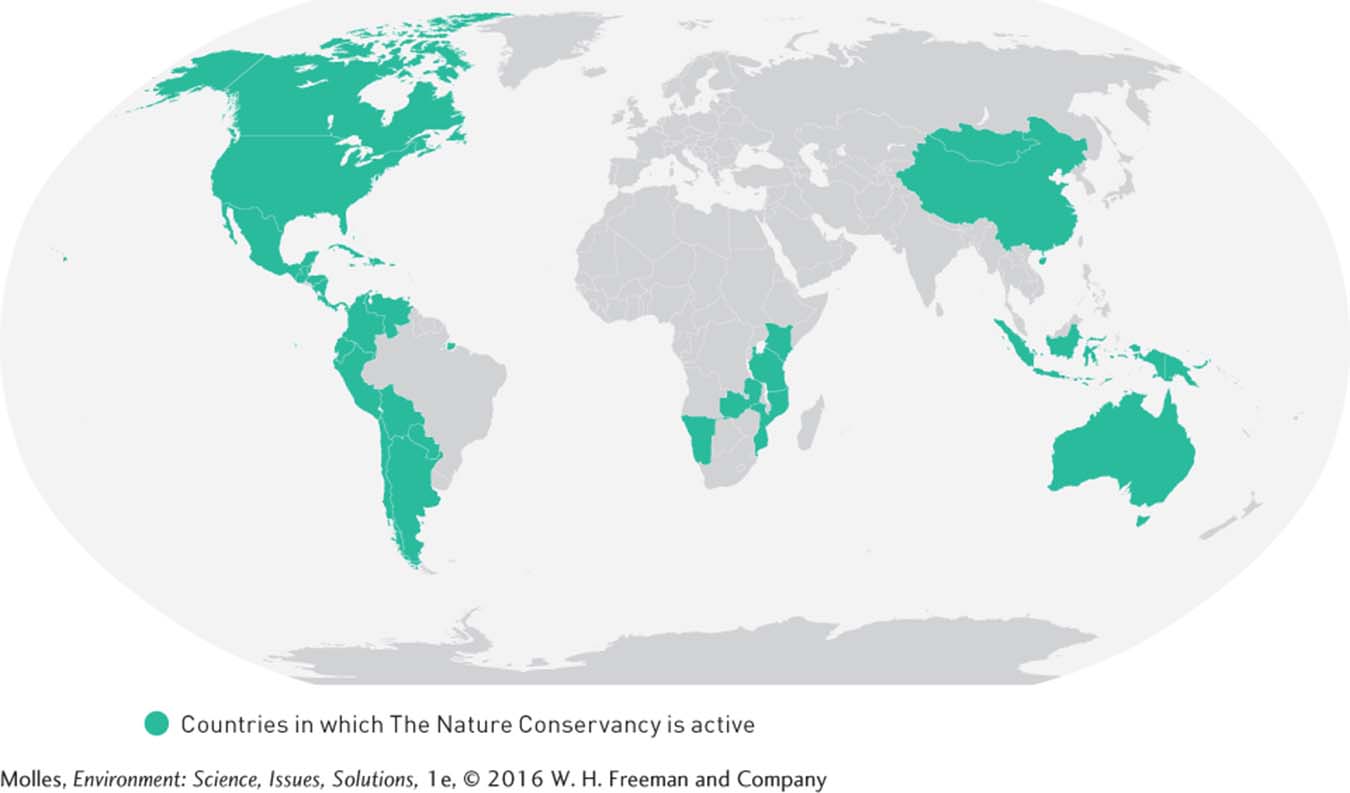4.10 Nongovernmental conservation complements governmental programs
During the past three decades, nongovernmental organizations (NGOs) and private individuals have taken the lead in protecting ecosystems around the world. One of the main contributions to conservation that they make stems from their greater flexibility, compared with that of governments. When private individuals are involved, setting up a protected area can be decided by a personal commitment. For example, entrepreneur Douglas Tompkins, who founded the clothing companies North Face and Patagonia, and media mogul Ted Turner, who launched CNN, have created protected areas around the world totaling approximately 16,000 km2 (6,240 mi2)—about twice the combined areas of the U.S. states of Rhode Island and Delaware.
In the case of a nongovernmental conservation organization, a decision to allocate funds to protect an area with potential conservation value may only require a positive vote from a board of directors. There are hundreds of international and national nongovernmental conservation organizations actively working to sustain biodiversity, and they have preserved areas totaling over 2.5 million km2. Some of the best known organizations include the World Wildlife Fund, Conservation International, and The Nature Conservancy.
The Nature Conservancy
The Nature Conservancy is a nonprofit, nongovernmental conservation organization established in 1951 to protect ecologically important areas around the world. Over the course of its more than half-
The Nature Conservancy originally focused on conservation in the United States and protecting critical habitat for rare and threatened species or conserving very small examples of regionally distinctive environments. Today, the organization has increasingly taken a larger-

Does the involvement of business and financial interests in The Nature Conservancy’s operations help or hinder its conservation mission?

Forever Costa Rica

The Nature Conservancy approach has emphasized working mostly out of the public eye to acquire and protect areas important to biodiversity conservation. What are some complementary approaches to this work adopted by other NGOs?
The Forever Costa Rica project provides an example of how The Nature Conservancy helps protect natural areas through partnerships with governments and private individuals. Costa Rica is famous for being one of the most biologically rich spots in the world—
debt-
A transaction wherein a developed nation forgives the debt of a developing nation in exchange for conservation pledges.
Unfortunately, its terrestrial parks were struggling with financial survival, and the country was protecting very little of its marine diversity. In 2010 The Nature Conservancy brokered one of the largest debt-
Think About It
In many regions of the world, the business community resists the establishment of new protected areas, arguing that such areas depress the economy. How might the conservation community address such concerns?
How might governments, conservation-
related NGOs, and academic institutions partner to protect ecosystems and landscapes? (What each does best: Governments administer and protect; NGOs use flexibility to pursue emerging conservation opportunities and raise funds from private sources; academic institutions teach and research.)